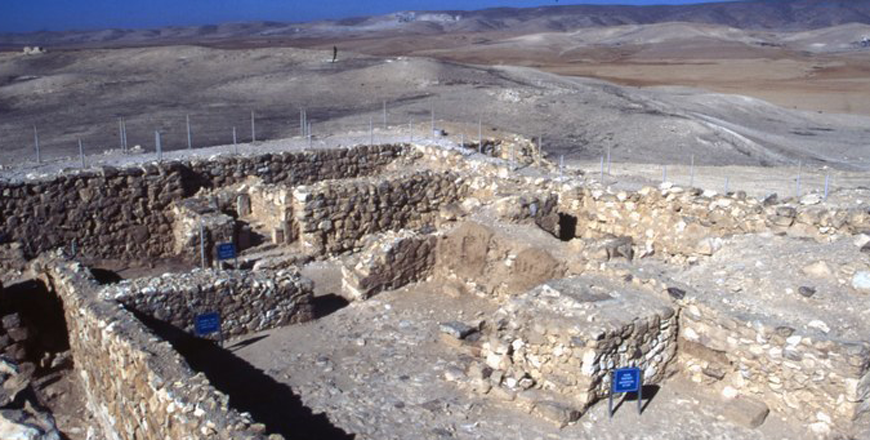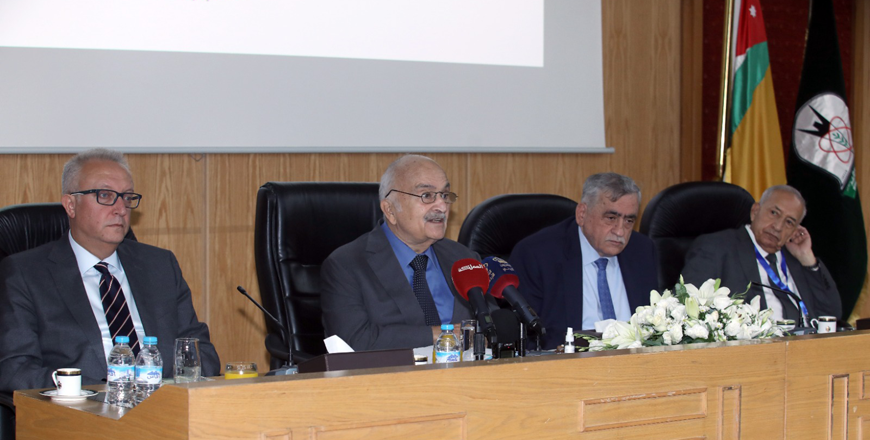You are here
Understanding ethnic identity through archaeological evidence
By Saeb Rawashdeh - Aug 13,2024 - Last updated at Aug 13,2024

A betyl of the Nabataean supreme god Dushara in Petra Siq (Photo courtesy of ACOR)
AMMAN — The question of ethnicity and cultural division is a common problem of humanities, and such topics have been studied by archaeology and anthropology especially since the beginning of the 20th century. Ethnic diversity was misused by ideologies and political movements in the past and present and different schools of historiography, sociology, archaeology and political science dealt with ethnicity in different ways.
Ethnic group consists of individuals connected with common language, common origin, shared traditions, history, society and social interaction. Ethnicity is often interchanged with the term nation.
Cultural diversity, especially as a concept used in Near Eastern archaeology, is often intuitively applied to material culture to mean variation in cultural patterning.
"In recent anthropological literature, as in biological studies, diversity has been assigned a very specific meaning and usually entails the quantification or measurement of variation within a given cultural assemblage," said the scholar Ann Killebrew from The Pennsylvania State University, adding that diversity in this context has been viewed as a tool for defining the relative similarity or dissimilarity among archaeological assemblages and has played an increasingly important role in stylistic analysis and interpretation.
In the broader context of diversity, stylistic analysis has been used to define spatial and temporal distributions, to locate social units and to monitor changes, to measure social interaction and social exchange, as an indicator of social boundaries, and as a means of communication, Killebrew continued, adding that ceramic diversity has also been an important approach for the study of pottery production.
Researchers have attempted to reconstruct cultural boundaries based on the analysis of material culture and a close relationship is sometimes discernible between boundaries defined by material culture, historical texts, geographical units, social, political or economic systems, and/or ethnicity.
"However, this is not always the case, since many different factors can come into play which account for different patterning of material culture. In addition, the open or permeable nature of boundaries, especially in 'frontier' areas, has been noted by numerous scholars," the professor noted, adding that all of these different aspects of human and societal behaviour must be taken into account when interpreting stylistic diversity in the archaeological record.
A third concept, ethnicity, relates to studies of "archaeological" cultures, stylistic diversity or variation and cultural boundaries and it is a term which has been explored for the last half century by anthropologists, sociologists, economists, political scientists and historians working in the Near East.
"Some scholars viewed ethnicity as an essential attribute, a fixed and permanently structured element of human identity, while others saw ethnicity as a more malleable category that was responsive to changing social settings and circumstances," said Killebrew, adding that social scientists have attempted to explain the phenomenon of ethnic group solidarity as having either primordial or circumstantial origins.
"‘Primordial’ ethnicity, or the bond of kinship and family (real or imagined), is expressed in commonalities of speech and customs resulting from the coerciveness of common blood ties. According to this psychological explanation for group membership, one belongs to a particular group because of birth or blood ties, i.e. one's parents or ancestors were members of the same group, Killebrew said, stressing that there is often a historical depth to a group's identity, usually supported by a rhetoric and mythical or religious language which may detail the origin of the group and support social or political structures.
"These ties based on kinship often are very conservative, reflected in a great continuity in the group's cultural expression, and can persist for many generations, while remaining stable and impervious to change," Killebrew underlined.
A second major approach to ethnicity, termed "circumstantial" or "situational" (both internal and external forms), sees ethnic allegiance as a result of political and economic interests and strategies. From this perspective, the boundaries that differentiate between groups are more important than the typical physical characteristics, such as material culture, that are enclosed within these politically -or economically- defined boundaries.
"Allegiance based on situational ties is generally flexible and more responsive to changing circumstances, particularly in the political, social, or economic environment. If the situation should change so that members of a group feel it is to their advantage to align their 'ethnic' identity differently, then the boundaries of the group will also change," Killebrew said, adding that this flexibility means that the typical behavioural characteristics of an ethnic group cannot be treated as fixed and static indicators of identity.
Combination of primordial and circumstantial approaches is the third approach to ethnicity/nationality. This school interprets ethnicity as a set of diverse forces that can connect individuals into a social group.
"Thus, ethnicity is a process of interaction which can take place on many levels between various groups of people. The contact and resulting connection can take place in the political, economic, social, religious, or familial spheres of human activity and is in constant flux," said Killebrew.
Social scientists have had great difficulty in defining ethnicity based on observing modern-day societies. Even greater obstacles are encountered when archaeologists attempt to discern ethnicity and ethnic boundaries based on the very incomplete material culture of the past. One of the main problems is also the lack of written sources, thus the material evidence could not always point out to ethnicity of people who used certain objects.
Therefore, very little thought has been given to which aspects of ethnicity can be translated and observed in the material culture of the past and under what circumstances the material culture reflects ethnic groupings.
"In the past decade, a number of articles have addressed the problem of ethnicity in Canaan during the 13th – 11th centuries BC," said Killebrew, noting that other archaeologists acknowledge ethnicity as a factor in human behaviour and thus, in certain instances, there may be a relationship between ethnicity and material culture.
The challenge for archaeologists is to attempt to define and delineate case studies in the archaeological record in order to begin to construct paradigms for the interpretation of cultural diversity or uniformity. In my opinion, the transition between the Late Bronze II and Iron I periods presents such an opportunity to examine the relationship between material culture and cultural and ethnic boundaries, Killebrew concluded.
Related Articles
AMMAN — The Late Bronze Age was a period of connectivity between different political centres in the Middle East, North Africa and southern E
AMMAN — British-American archaeologist Jack Green became interested in the archaeology of the Middle East and the Levant as he came across a
AMMAN — HRH Prince Hassan, President of the Arab Thought Forum, on Sunday, attended the opening of the 12th international conference on the


















